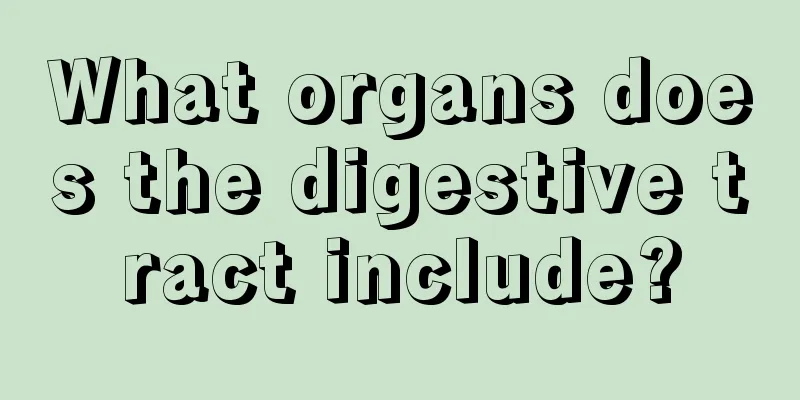What organs does the digestive tract include?

|
The health issues of the digestive tract need to be paid attention to, because some diseases caused by the digestive tract will cause harm to our health. The digestive tract includes organs such as the mouth, pharynx, esophagus, stomach and small intestine, and we should also pay attention to their functions. 1. What organs does the human digestive system include? 1. The human digestive system consists of two major parts: the digestive tract and the digestive glands. The human digestive tract includes the mouth, pharynx, esophagus, stomach, small intestine (including duodenum, jejunum, and ileum) and large intestine (including cecum, appendix, colon, and rectum). In clinical practice, the digestive tract is often divided into the upper digestive tract (the part above the duodenum) and the lower digestive tract (the part below the duodenum). 2. Digestive glands include oral glands, liver, pancreas and many small glands on the walls of the digestive tract. Their main function is to secrete digestive juices. Throughout its life activities, the human body must absorb nutrients from the outside world as a source of energy for its life activities in order to meet the needs of a series of metabolic activities such as human development, growth, reproduction, and tissue repair. The organs of the human digestive system work in coordination to physically and chemically digest food taken from the outside, absorb its nutrients, and excrete food residues from the body. It is an important system to ensure the normal metabolism of the human body. 2. How are the upper and lower digestive tracts distinguished? 1. The distinction between the upper and lower digestive tracts is artificial and is based on their different locations on the ligament of Treitz. The digestive tract above this ligament is called the upper digestive tract, and the digestive tract below the Treitz ligament is called the lower digestive tract. 2 Ligament, also known as the suspensory ligament of the duodenum, is a bundle of muscle fiber cords that runs from the right corner of the diaphragm downward to the duodenal jejunal flexure, fixing the duodenum and jejunum to the posterior abdominal wall. The ligament of Treitz is an important landmark for identifying the starting point of the jejunum. |
<<: What to do if the veins in the lower extremities are dilated
>>: Does UV radiation cause skin cancer?
Recommend
What causes right brain nerve pain?
Many people in life often suffer from headaches, ...
How should laparoscopic surgery be performed?
The examination and treatment of pelvic and ovari...
How to control weight gain after a cold
Many people are worried that catching a cold will...
Several common causes of lung cancer
According to the latest statistics of lung cancer...
How to remove musty smell from clothes
If clothes are stored for a long time after being...
Family members must do a good job of caring for patients with uterine cancer
The appearance of uterine cancer has brought many...
What to do if you have a fever with small cell lung cancer
What should I do if I have a fever due to small c...
What are the causes of coughing up blood during laryngeal cancer radiotherapy
Radiotherapy for laryngeal cancer In recent decad...
The difference between peach egg and peach beauty
Nowadays, many students plant some succulents at ...
Atherosclerotic plaque, how much do you know about it?
There are many obvious symptoms of atheroscleroti...
How to self-diagnose lung cancer? Introduction to self-diagnosis methods for lung cancer
Lung cancer has some symptoms in the early stage,...
What to do if you catch a cold and vomit
Today's life and work are fast-paced. People ...
What is the best way to disinfect a room
Keeping the room clean and hygienic will make you...
What is the cause of nasopharyngeal carcinoma and what are the dietary therapies?
Nasopharyngeal cancer is a common disease that br...
The harm of liver cancer needs to be paid more attention
In daily life, liver cancer is extremely harmful ...









